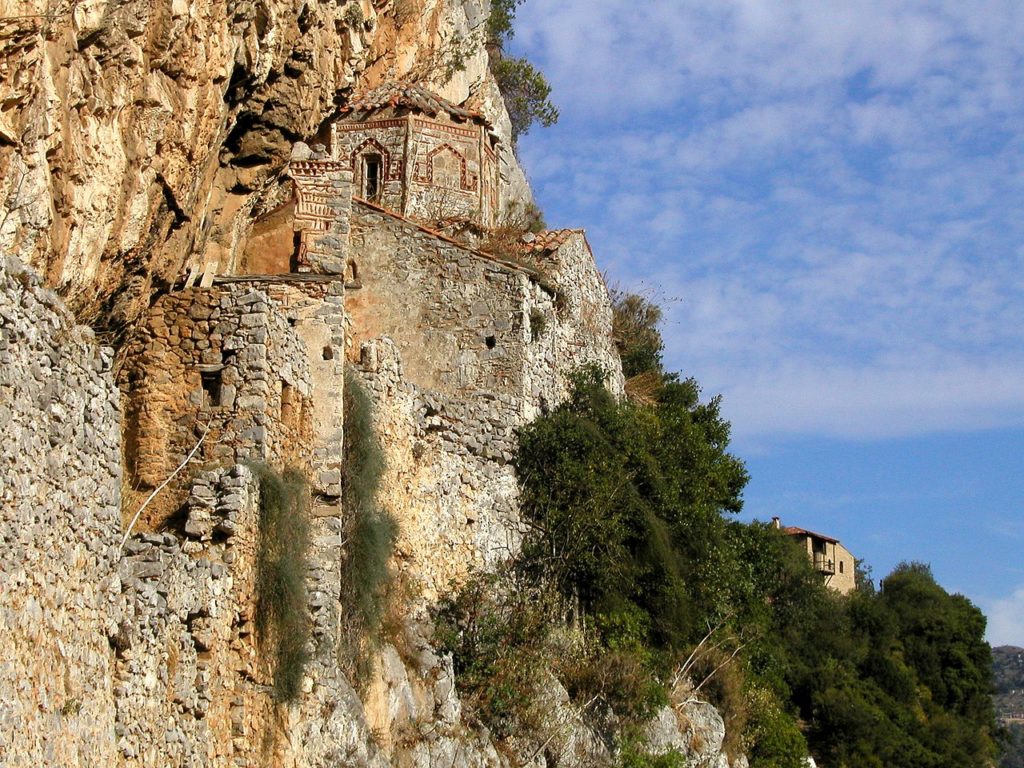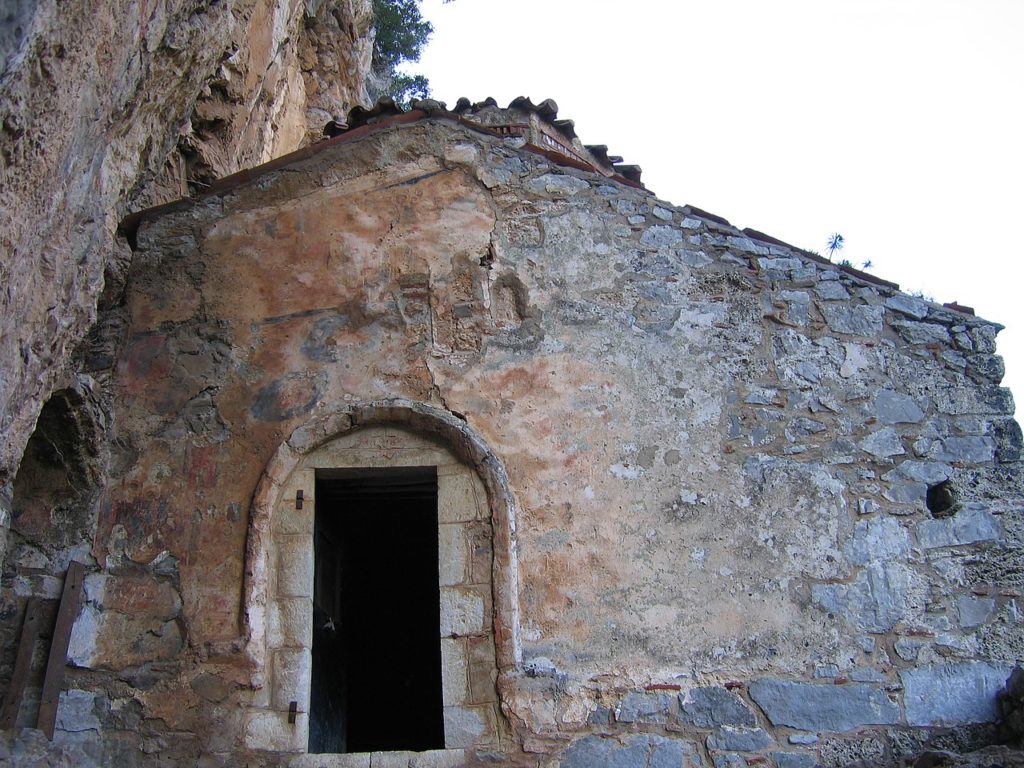
The Monastery of the Philosopher in Arcadia, dedicated to the Assumption of the Virgin Mary, is steeped in Greek history.
Located on the west side of the gorge of River Lousios, 11 km (7 miles) south of Dimitsana, in the Prefecture of Arcadia, in the Peloponnese, it consists of two monastic complexes, one old and one new.
The old Monastery of the Philosopher is the most historic and oldest monastery of Arcadia and one of the oldest Byzantine monuments in Greece.

CC BY-SA 3.0
The 1,050-year-old monastery
It was founded in the year 963 by Ioannis Lampardopoulos from Dimitsana, the so-called “philosopher,” who was the secretary (“Protocrite”) of Byzantine emperor Nikephoros II Phokas.
The monastery took its name from the founder’s nickname. Architecturally it is characterized as cruciform, or cross-shaped.
It was built inside a cave, above a steep ravine; today only a small church in the Byzantine style of the 10th century with its remarkable frescoes is preserved.
It is a four-column cruciform church with an octagonal dome. Of the rest of the monastery, only a cistern and the ruins of cells and other buildings survive.
According to tradition, the old monastery served as a “krifo scholio” (secret school), during Ottoman rule, which later developed into a great theological school that operated in the new Monastery.
Many teachers, priests, monks, senior clergy, as well as leading figures of the Church attended this School.
Four patriarchs of Jerusalem, two Ecumenical Patriarchs and many supreme ecclesiastical men (Gregory V, German of Old Patras) graduated from the new Monastery of the Philosopher.
The new Monastery of the Philosopher
The new Monastery of the Philosopher was founded around the mid-7th century. It is located about 400 meters from the old monastery.
Its katholikon was built in 1661, and then several cells were built, but without abandoning the old monastery. The iconostasis of the katholikon is wood-carved with exceptional decoration and has icons of Cretan style attributed to painter Victor (1663).
The hagiography took place in 1693, paid by “Mavroidi-pasha Farmakis” from Stemnitsa, who had converted to Islam but returned to the Christian fold during the days of Venetian rule.
There is an image of the sponsor on the west side of the church in typical Oriental form with a luxurious garment and a rosary next to the icon of Saint Helen.
Between the years 1834-1836, the monastery was dissolved by the decision of the Bavarian Duchy, on the pretext that it had less than six monks.
The property was confiscated and sold to private individuals. After the dissolution, the monastery was deserted and gradually collapsed.
Today it functions as a male monastery, by a royal decree signed on April 14, 1922, of the neighboring Monastery of Timios Prodromos of Stemnitsa.
In 1955 it was declared a protected monument and from 1992 and on it began to be renovated under the supervision of the Ministry of Culture.



